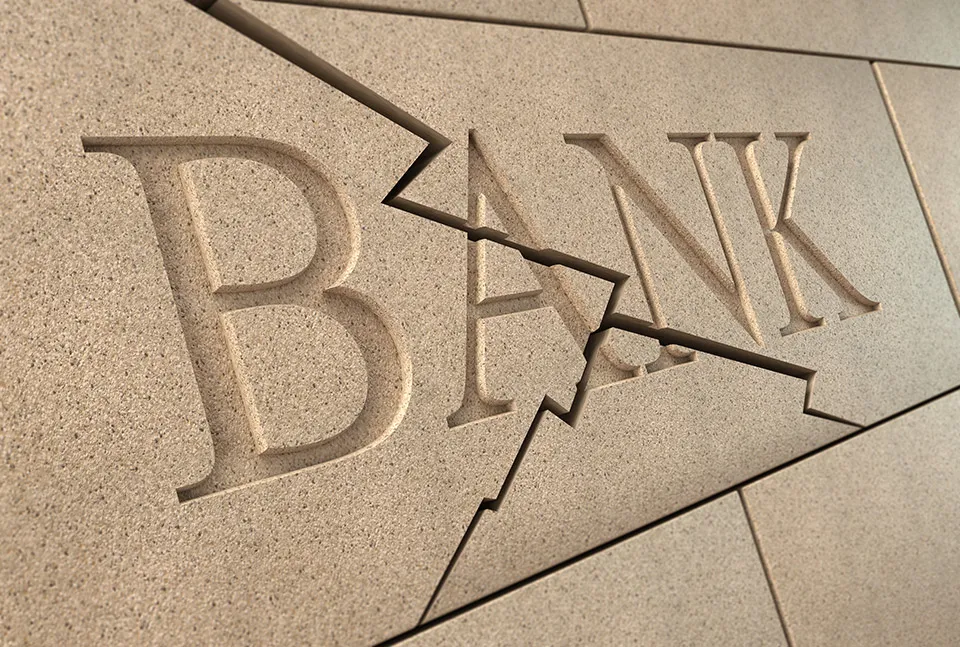In case anyone doubted it, one takeaway from both the Credit Suisse and Silicon Valley Bank situations is that the market is efficient at identifying the weakest link. Another is that until broader confidence in the system is fully restored, contagion will keep moving onto the next weakest.
In the US, that was deemed to be Signature Bank and then First Republic. It remains to be seen if the damage stops with Credit Suisse in Europe.
In turbulent times it is difficult to know where to allocate blame for systemic failure arising from many small and inter-linked mistakes. But there is plenty to go around.
While in the cases of both SVB and Credit Suisse it is management failures that have proved ultimately critical, the lack of diversification that characterized liabilities and assets at SVB and led to calamity goes beyond that institution itself.
Yes, it piled recklessly into an asset class that – while assuredly safe from a credit perspective – had been widely flagged for months as a centre of colossal, though mostly unrealized, market risk for institutions as rates rose at the fastest pace in 40 years.
And yes, it was also woefully short-sighted as to the risks of a uniquely concentrated customer base – and source of liabilities – that would, by its nature, be particularly vulnerable to risk aversion in the run up to the hard landing that rapid rate rises could precipitate.
As any student of finance knows, all crises are crises of liquidity until the moment they become crises of solvency
In turn, those customers, too, bear substantial responsibility for their own concentration risk. Just as the early days of the pandemic saw much sober talk of the need for a shift away from just-in-time efficiency in supply chains to just-in-case stockpiling of inventory, so corporates – and their owners – should have learned to seek some of that resilience in providers of core banking services.
After all, SVB’s clients were mostly funding their businesses not through predictable operating cash flow but rather through the cash that venture capital funds had fallen over themselves to hand out in the good times – and which needed to be stored safely.
Many kept it all in one bank for simple convenience. SVB was so bound up in the operations of its clients that to move away from it was considered unthinkably awkward.
The supreme irony of the events immediately preceding the collapse of SVB, of course, is that they were triggered by its customer base, urged on by those owners, finally embracing the eminently sound policy of diversification of depository counterparties in an unseemly rush.
Sadly for SVB, they all embraced it at the same time. And as any student of finance knows, all crises are crises of liquidity until the moment they become crises of solvency. The circle is as self-fulfilling as the notion that in a crisis, financial stability becomes monetary policy.
Inflection point
Banking is suddenly at an existential inflection point. It is now clear how essentially vulnerable the sector is no matter what the capital and liquidity ratios say.
If anyone needed reminding that a bank is only ever as robust as it is believed to be, the events in March have reinforced that. Such is the nature of a fractional reserve system.
And this time, central banks can’t rush to the rescue with the usual rapid rate cuts: not with high inflation so persistent after so many previous salvage operations.
The ramifications on central bank policy of what happened over a feverish two weeks remain to be seen.
Once again, as in the UK’s flirtation with a sovereign bond market meltdown last autumn, investors must face up to the conflict between central bank policies that protect the value of money and those that protect the stability of the banking system.
Once again, investors must face up to the conflict between central bank policies that protect the value of money and those that protect the stability of the banking system
Markets want them to do both at the same time. But they can’t.
The wreckage of SVB and Credit Suisse is still smouldering, but policymakers do not have the luxury of waiting for the smoke to clear before considering what their next moves should be. For all the panic amid the latest crisis, those next steps might be yet more fearsome.
First, the notion that there is a minority of large and vital financial institutions of importance on the one hand and, on the other, a majority of banks on which little depends must now be dismissed. Put a few small struggling banks together and they suddenly become a threat to the whole system.
There will be surely no such thing as a non-systemically important financial institution now. A one-size-fits-all approach to regulation is coming soon.
That alone will make this moment a regulatory watershed to rank alongside 2008 – or perhaps overshadow it.
Even after Credit Suisse, the current difficulties still seem some way from the world-ending feeling of that awful mid-September weekend 15 years ago. For now, solvency and capital strength remain much more robust than then. But something has gone seriously awry on liquidity coverage. And the regulatory legacy of what is now unfolding might be even more far-reaching than the aftermath of 2008.
Big banks are already familiar with counterparty and exposure limits to single names; big corporates are also sophisticated in this regard. The universe of smaller institutions and their clients may have to grasp this much more urgently.
Market forces are already making this happen. Deposits are on the move, to the extent that the biggest and supposedly safest institutions cannot onboard the customers wanting to open accounts with them.
Assuming they can work through those backlogs in time, one certain consequence will be that the biggest banks – those already too big to fail – will become ever bigger.
This is the unfortunate consequence of not regulating, supervising and stress-testing smaller banks more robustly and permitting them to think of themselves as not relevant to broader stability. Not for the first time, the result will be the opposite of what post-GFC regulation intended.
Deposit guarantees
Second, the status of deposits – all deposits – is now of critical importance.
For all the talk of systemic exceptions, it is hard to read recent events as anything other than an unspoken commitment to insure all deposits for the foreseeable future.
In the short term this was obviously understandable: the proximate cause of current failures was a lack of confidence in the safety of deposits; addressing that immediately can only be done one way.
It has long been argued that a pragmatic approach to financial regulation may indeed be to assure institutions that they will not be routinely bailed out, but then to bail them out – at least as far as their liabilities to depositors are concerned – when the very worst happens.
Nothing that has happened in the last fortnight seems to have changed that.
But in the longer term, if deposits are not to be universally guaranteed, other measures will have to be considered.
For all the talk of systemic exceptions, it is hard to read recent events as anything other than an unspoken commitment to insure all deposits for the foreseeable future
Among some market participants, there is talk now of some kind of gating mechanism for deposits above an insured threshold, as authorities grapple with technology that makes bank runs easier to start and harder to stop than ever.
A world in which smaller institutions are regulated ever more tightly, coupled with the possibility of a weakening of the dominance of the banking sector on corporate payments – mirroring how its role has lessened in the retail payments sphere thanks to new technology – leaves one obvious result: consolidation.
Policymakers in the US may hate the idea, but it is hard to square the circle of a regulatory ramp-up while simultaneously preserving the viability of the small-bank business model. Complying with proper regulation is expensive. It requires scale.
Still bleeding?
The 64 trillion-dollar question, of course, is whether the bleeding has now been staunched. At the time of writing, the assessment on that would have to be mixed: there has been neither a full-scale financial sector collapse, but nor is there confidence that enough has yet been done to begin to edge markets back to their traditional precarious acceptance of the confidence trick upon which modern banking relies.
In any case, in the hierarchy of concerns there is a still greater one. For some time now, US Federal Reserve chair Jerome Powell has been rehearsing his impersonation of predecessor Arthur Burns. The latest crisis must surely steer him ever more in that direction. It is hard to imagine that the regulatory response from policymakers on both sides of the Atlantic will be anything other than an easing.
The consequences now of an opposite approach – however justified it might be by the inflation data – would be the hard landing that so many have feared and which could, among other things, put paid to a second term for president Joe Biden in next year’s election.
Such is the corner that policymakers and regulators have backed themselves into. Much depends on their response in the weeks to come.
In the aftermath of 2008, there was plenty of talk of a new social contract between the banking sector and society at large. The regulatory response to that crisis was in part an effort to recast that contract.
But the shortcomings of that response and of monetary policies since have created an urgent need for a similar examination of the foundations of modern finance. What do we want banks to do? And how should they do it?





